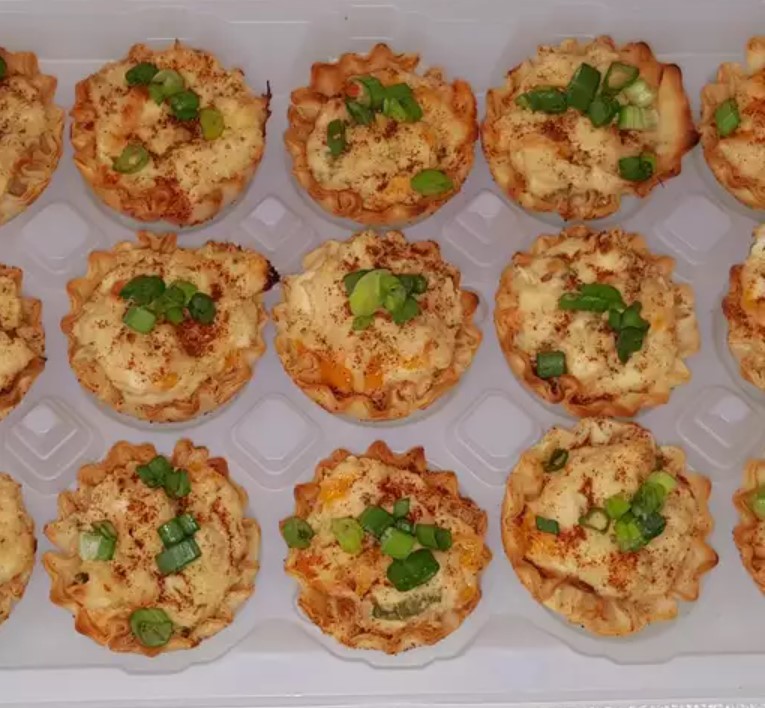Introduction
Welcome to our King Crab history and sustainability appetizers! These tasty bites bring the deliciousness of king crab to your plate. They’re a fantastic way to enjoy the sweet and savory flavors of this fantastic seafood.
Our chefs have put together a menu that highlights King Crab’s amazing taste. Whether you’re a seafood lover or trying crab for the first time, our King Crab Appetizers offer a special introduction to the world of seafood.
From classic crab cakes to unique crab-stuffed mushrooms and more, our menu showcases the versatility of King Crab and our chef’s skills. Get ready for a fantastic food adventure as you savor the fantastic flavors of our King Crab Appetizers. It’s a treat that will leave you wanting more!
Ingredients
Here are some common ingredients for King Crab history and sustainability appetizers, along with quantities:
- King Crab Legs: approximately 1 pound, cooked and shelled.
- Breadcrumbs: 1 cup, for binding and texture.
- Mayonnaise: 1/4 cup, for moisture and creaminess.
- Egg: 1 large, for binding the mixture.
- Dijon Mustard: 1 tablespoon, for a hint of tanginess.
- Fresh Parsley: 2 tablespoons, chopped finely, for freshness and flavor.
- Lemon Juice: 1 tablespoon, for a zesty kick.
- Salt: to taste, for seasoning.
- Black pepper: to taste, for added flavor.
- Garlic: 2 cloves, minced, for a savory touch.
- Olive Oil: 2 tablespoons, for cooking or roasting.
- Butter: 2 tablespoons, for richness (optional).
- Lemon wedges: for garnish and serving.
Preparation
history King Crab history and sustainability
Indigenous Use: King crab has been a valuable food source for indigenous peoples of the North Pacific region for centuries. Native communities in areas like Alaska and the Russian Far East relied on these crabs as a traditional part of their diet.
Commercial Harvesting: The commercial harvesting of King Crab began in the early 20th century when American and Russian fishermen recognized the value of these large, succulent crustaceans. During the 1950s and 1960s, King crab became a significant part of the seafood industry in both countries.
Alaskan Boom: Alaska, in particular, saw a boom in King Crab fishing during the 1960s and 1970s. This period marked the heyday of the Alaskan King Crab industry, attracting many fishermen to the state’s waters in search of the valuable catch.
Regulations: Due to concerns about overfishing and the sustainability of King Crab populations, regulatory measures were introduced to manage the crab fisheries. Quotas and strict regulations were put in place to protect the crab population and ensure their long-term survival.
Export and Popularity: King Crab’s delectable flavor and large leg meat made it a sought-after delicacy in international markets. It gained popularity in fine dining establishments and seafood markets worldwide, contributing to its status as a premium seafood item.
Modern Industry: Today, King Crab remains a prized seafood item. The industry continues to thrive in Alaska, and sustainable fishing practices are more prevalent to protect the species and its habitat. King crab is enjoyed in various culinary creations, from traditional crab boils to gourmet appetizers like crab cakes and crab-stuffed dishes.
This subheading distribution helps to break down the information into more manageable sections, making it easier to read and comprehend.
conclusion
In conclusion, King Crab is not just a delectable seafood delicacy; it’s a creature with a rich history that spans centuries, from its indigenous use to its emergence as a global culinary treasure. While challenges related to sustainability have prompted regulations, the King Crab industry continues to thrive responsibly. Its succulent meat, enjoyed in various dishes worldwide, continues to delight seafood enthusiasts and gourmets alike. King Crab’s journey reflects the enduring appeal of the ocean’s bounty, making it a symbol of both tradition and gastronomic innovation.
